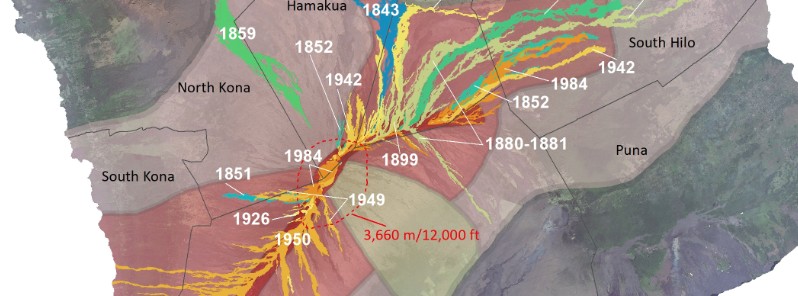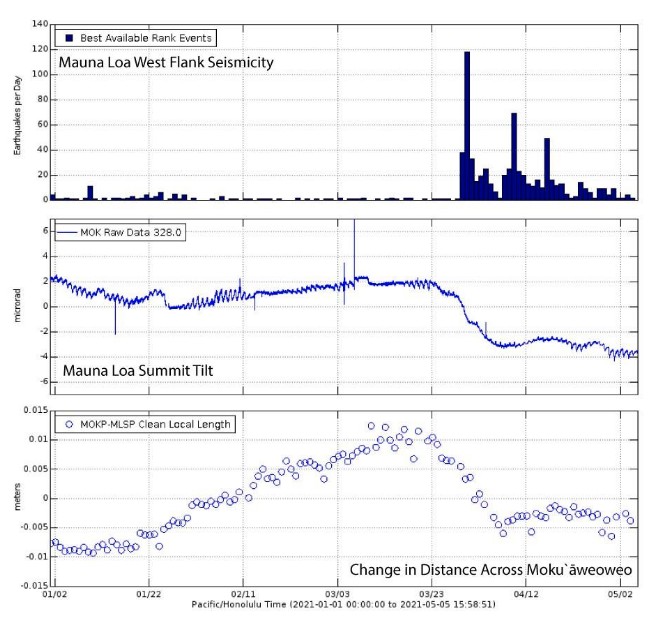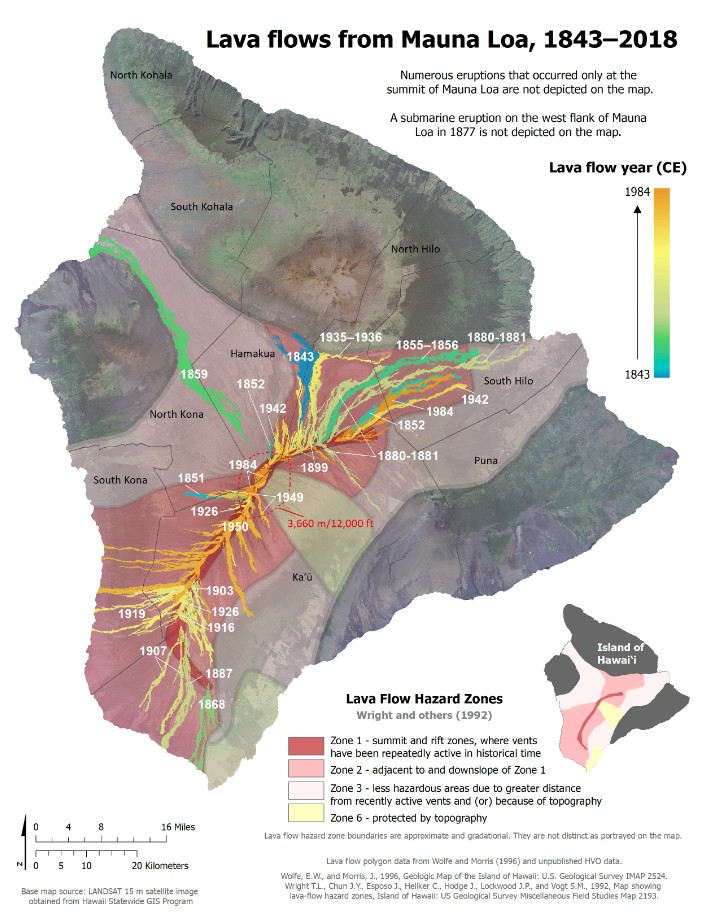HVO tracking changes at world’s largest volcano – Mauna Loa, Hawaii

Scientists at the USGS Hawaiian Volcano Observatory are tracking changes on the Mauna Loa, the world's largest volcano. This volcano is currently not erupting, but there have been signs of elevated unrest above known background activity since July 2019, when HVO increased its Volcano Alert Level to ADVISORY and its Aviation Color Code to YELLOW.
Although Mauna Loa is Earth's largest active volcano, it has lived in the shadow of Kīlauea since it last erupted in 1984, HVO volcanologists noted in a recent news release.
The geologic record shows that Mauna Loa erupts every seven years on average. However, 37 years have passed since lava flows from the volcano's Northeast Rift Zone came within 7 km (4 miles) of Hilo. Nonetheless, Mauna Loa will certainly erupt again someday and extensive monitoring efforts of the USGS Hawaiian Volcano Observatory (HVO) have continued throughout the decades.
Recent changes in deformation and seismicity on Mauna Loa are the latest in a series of 'rumblings' that arguably began in 2004.
At that time, Global Positioning System (GPS) instruments showed inflation of the volcano's summit reservoir system accompanied by very deep earthquakes.
This behavior continued for several months before Mauna Loa returned to its background state.
Summit inflation began again in 2014, this time together with shallow earthquakes, and has continued ever since, with only a short break in 2018.
In the past six months, there has been an uptick in earthquake activity on Mauna Loa's west flank and changes in the pattern of deformation at its summit.
These changes are small, sometimes barely above the noise, but may be telling that the magma system is evolving in important ways.
Three observations from the past several months are particularly interesting:
Deformation
The first is that the direction of deformation at Mauna Loa's summit has had reversed twice since October 2020, switching back and forth from an outward (expansive) direction to an inward (contractional) one.
The most recent contractional episode shortened the distance across Mauna Loa's summit caldera (Mokuʻāweoweo) by only about 1.5 cm (0.6 inches).
This is small compared to the amount of expansion that has taken place, but the sudden reversal is new behavior that hasn't been observed at Mauna Loa with modern instruments.
Seismicity
The second observation was the occurrence of a small, shallow M3.2 earthquake in Mokuʻāweoweo on March 6.
Using satellite radar, HVO was able to see that the earthquake caused nearly 10 cm (4 inches) of subsidence in a small portion of the caldera.
This is very unusual for a magnitude-3.2 earthquake and indicates that the fault may have slipped all the way up to the ground surface.
Change in tilt
The third observation is the smallest but may be the most meaningful.
Beginning on March 23, a tiltmeter near Mauna Loa's summit recorded a change in tilt of about 5 microradians. It is not unusual to see this much tilt at Kīlauea, but there has never before been a tilt signal that could be attributed to changes in Mauna Loa's volcanic system.
Changes in tilt at Mauna Loa have been observed due to daily or seasonal temperature changes and because of rainfall, but never before due to volcanic deformation.

The top panel is a histogram of seismicity on Mauna Loa's west flank, showing an increase in activity in that region over the past month. The middle panel is a tilt record from a tiltmeter near Mokuʻāweoweo, the change in trend from March 23 to April 5 is the first time a tilt change at Mauna Loa could be ascribed to volcanic changes. The bottom panel show the change in distance across the summit caldera, as measured by GPS. Lengthening of the line indicate expansion of the volcano, and decreases indicate contraction. Credit: USGS/HVO
Conclusion
These new observations are interesting because they suggest some of the deformation is driven by shallower processes than we have seen in the past several years. Because this is the first time HVO has observed this level of detail, it is difficult to know what the data might indicate about the volcano's future.
Mauna Loa may become quiet again and return to background, like it did in 2005, or it may not.
HVO scientists said they expect that there will be additional indicators, such as increased gas emissions and a sustained increase in seismicity, before any future eruption.
These recent observations remind us that Mauna Loa is a restless volcano and they are part of why HVO encourages everyone to think about how a Mauna Loa eruption might affect them and plan accordingly.

Featured image credit: USGS/HVO

Commenting rules and guidelines
We value the thoughts and opinions of our readers and welcome healthy discussions on our website. In order to maintain a respectful and positive community, we ask that all commenters follow these rules.